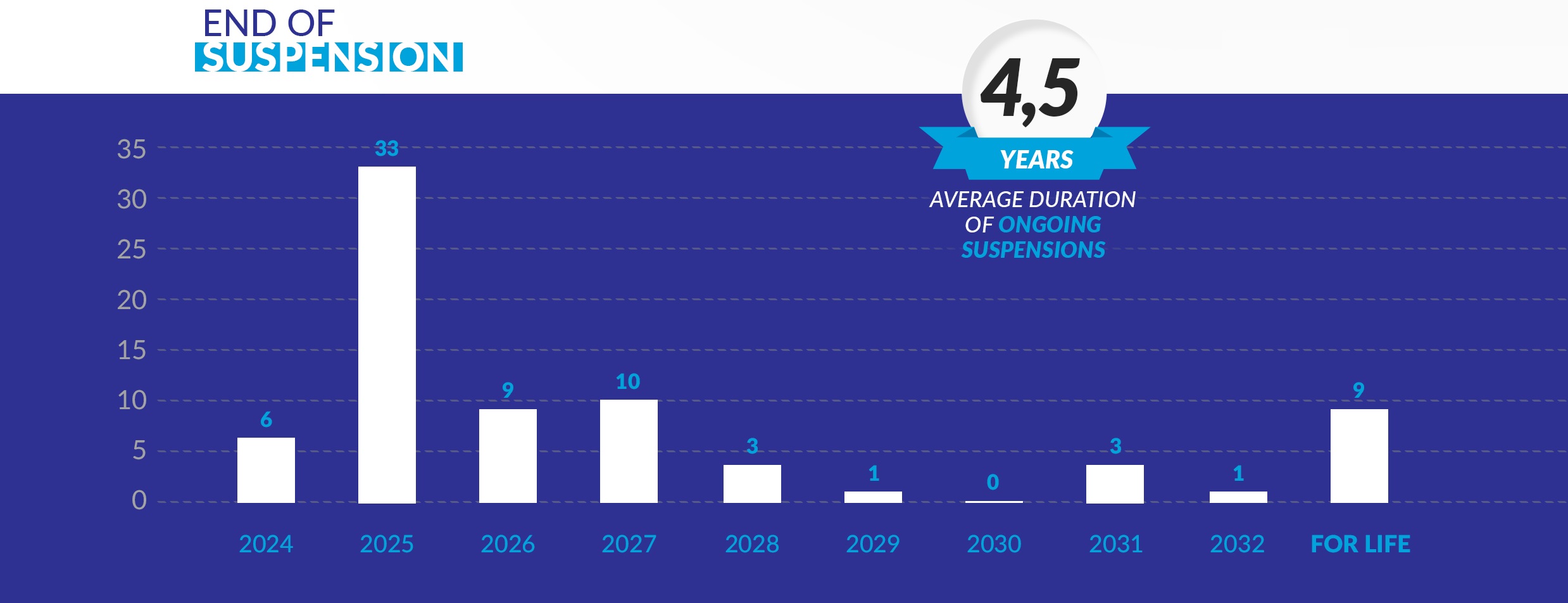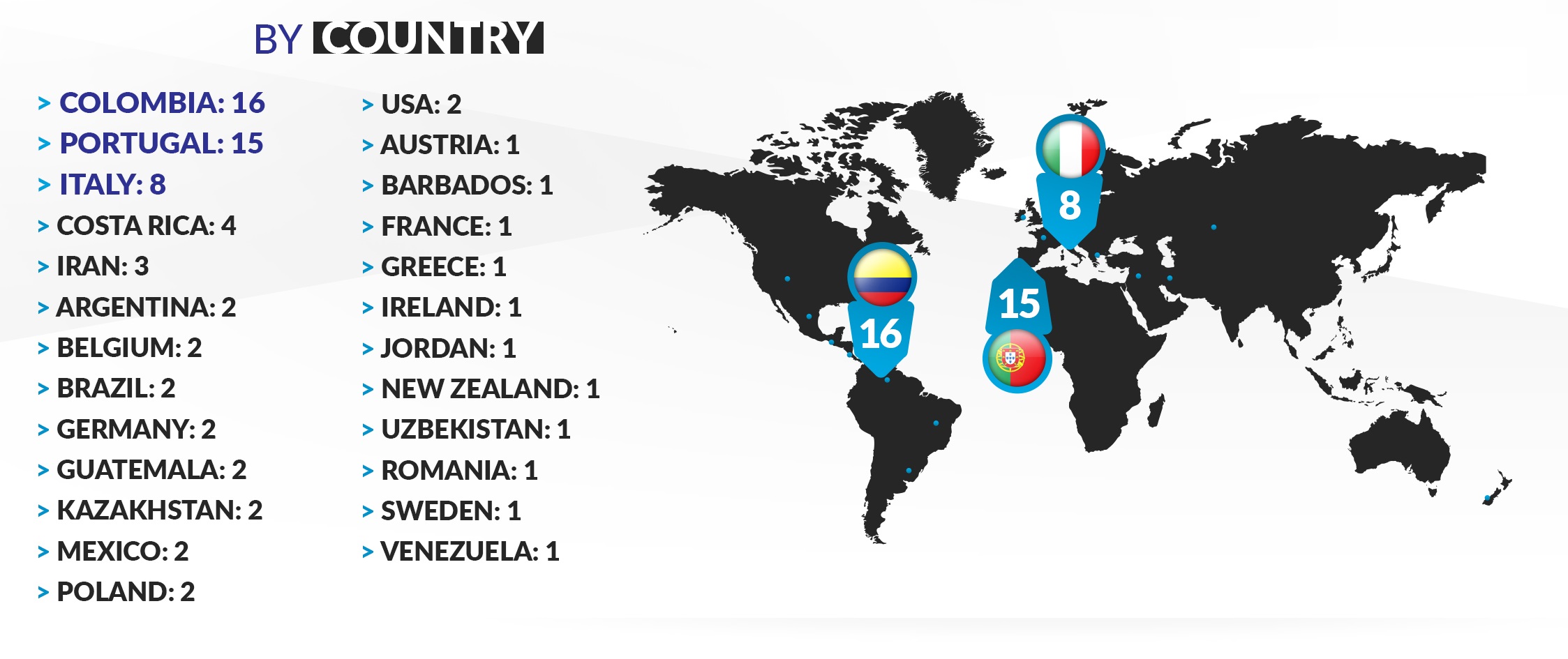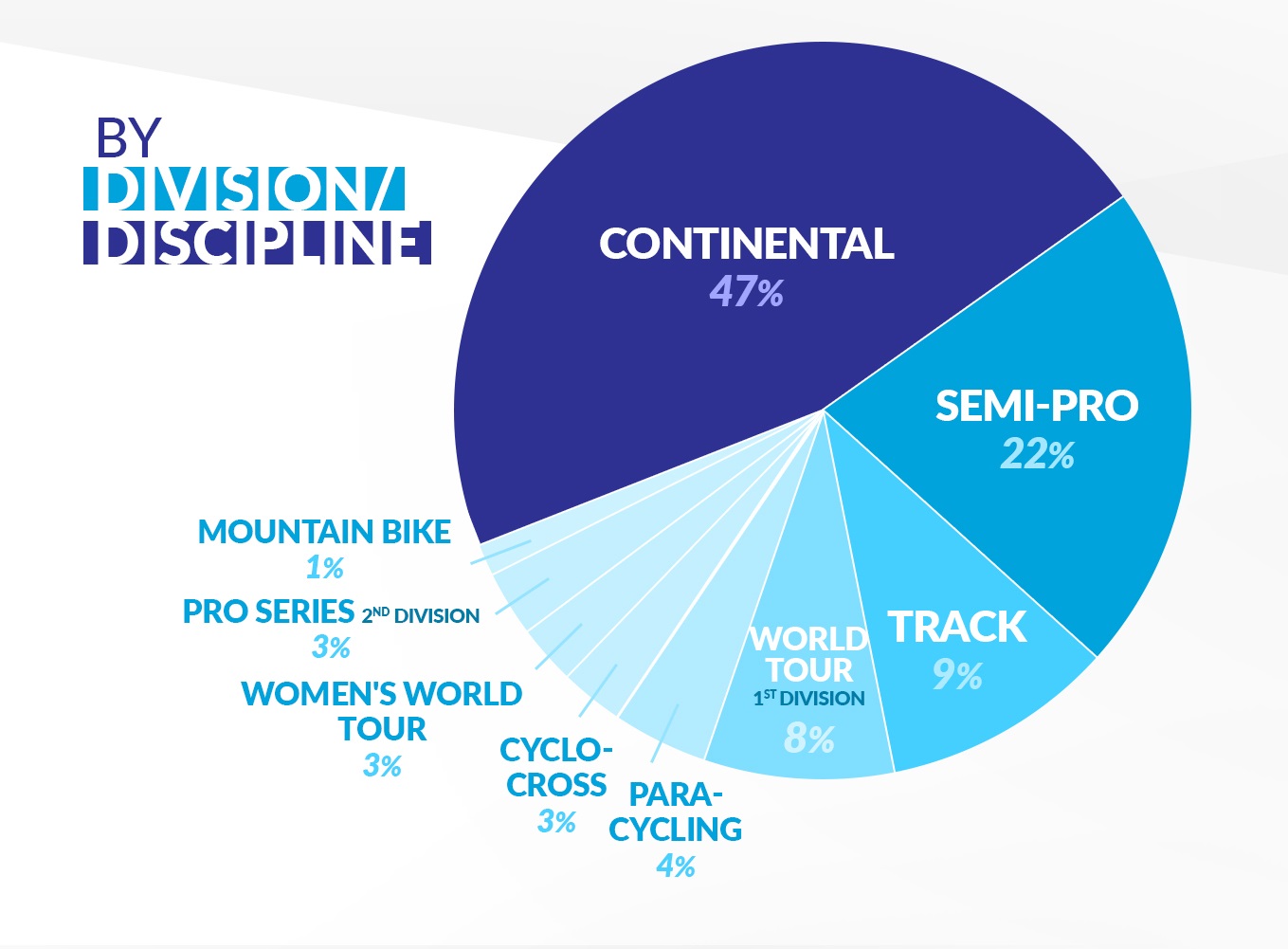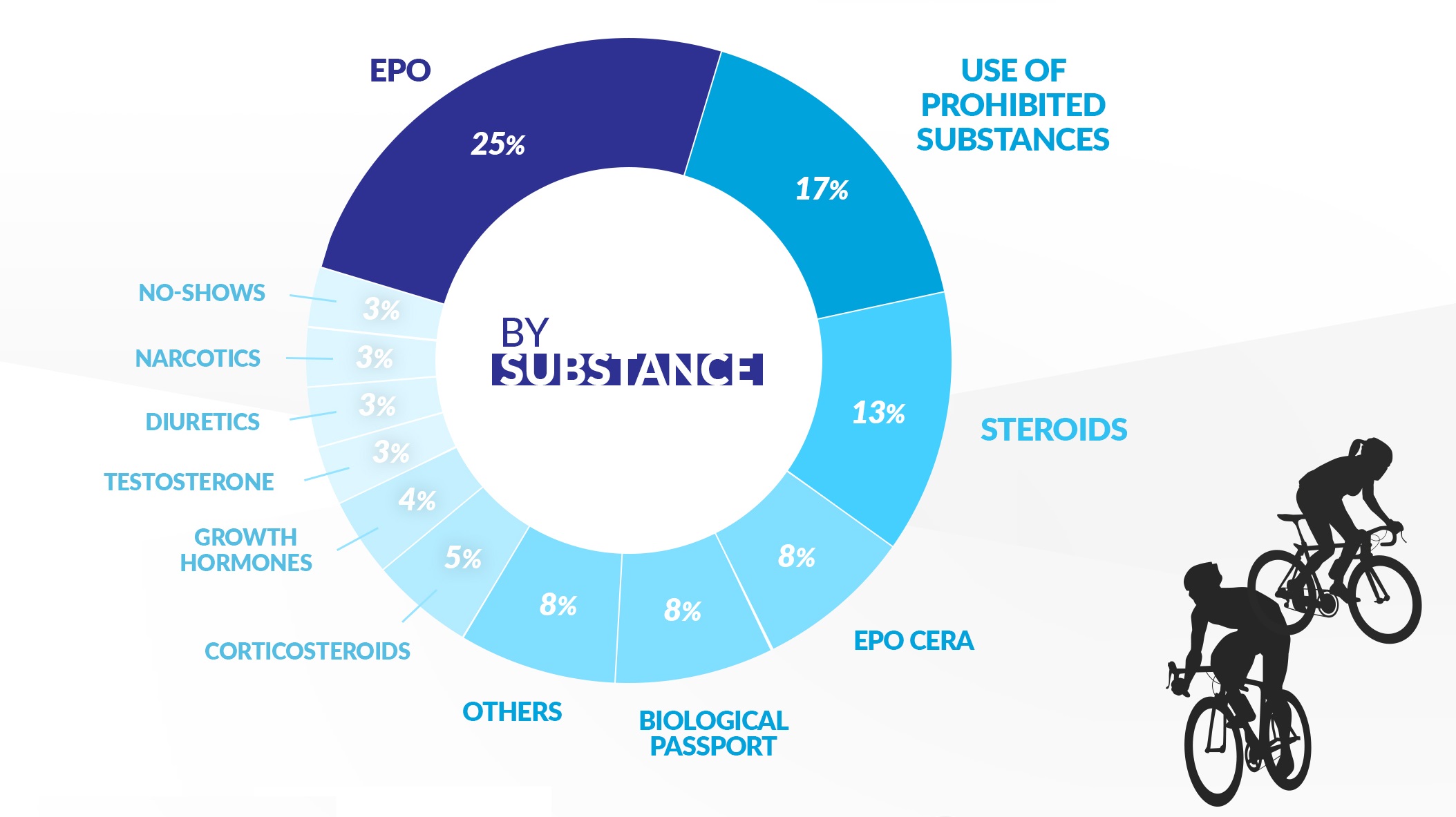In addition to its quarterly report, the Credibility Figures, the MPCC is now going to draw up an up-to-date table of sanctioned professional cyclists. As well as providing a snapshot of the current situation, the aim over time will be to identify changes in anti-doping measures.
For the past ten years, the MPCC has been producing the Credibility Figures, a report on the state of health of top-level sport, in order to place cycling in a more general context. These figures warn us to the cases that have come to light, leading to provisional suspensions pending sometimes lengthy disciplinary procedures. They highlight the effects of the fight against doping throughout the world and the means used by each sport to achieve them : from the introduction of a world anti-doping code to the establishment of dissuasive scales of sanction, through the regulatory compliance of each national anti-doping agency. As a committed player in the fight against doping in our sport, the Movement for a Credible Cycling will now set about establishing an annual snapshot of the sportsmen and women sanctioned in our sport, at the end of the procedures, in order to gain a better understanding of the evolution over time of the results of the fight against doping.
As of 1 September 2024, 75 professional licence-holders had been suspended for an anti-doping rule violation (ADRV) while competing at one of the three professional and semi-professional levels (World Tour, Pro Series, Continental) or while having taken part in races on one of the UCI’s continental calendars at the time of their test. These suspensions are present in almost all cycling disciplines : road, track, cyclo-cross, BMX and mountain bike. Nine cases involved lifetime bans from all sporting competitions.
This figure of 75 male and female riders reflects the recent trend in the number of doping cases reported in the Credibility Figures, with 15 to 20 cases coming to light each year. The average length of penalty, excluding life bans, among the athletes still suspended to date is 54 months, or four and a half years. This level of sanction is more or less equivalent to the 4-year scale for a positive test to a product banned by the World Anti-Doping Agency (WADA).

In addition to those taking part in the races, seven team managers and members of medical staff are serving very heavy suspensions, some of them have even been banned for life from all cycling-related activities.
Some territories more affected by doping than others
Of these 75 suspended riders, Colombia (16), Portugal (15) and Italy (8) are the three nations most represented, and for different reasons. Colombia appears to be the most complex case because many of the riders who tested positive were semi-professional riders taking part in races on the American continental calendar, races that are subject to testing either by national agencies or by the UCI.
The presence of Portugal in this roundup is also the consequence of the effects of the ‘Prova Limpa’ operation carried out by the local criminal police from 2021, on the basis of whistleblowing. The national anti-doping agency (ADoP) quickly sanctioned no fewer than 11 riders after the Continental W52-FC Porto team’s rooms were raided during a national-level race in April 2022. The longest suspension handed down was 10 years. For its part, the court proceedings have resulted in the appearance of 26 defendants, and the aftermath of this case hasn’t been fully clarified, with some witnesses having brought new elements to justice a few weeks ago. But the scandal has led to one step forward : the signing of a memorandum of understanding between the Portuguese Federation (FPC) and the ADoP to extend the mandatory biological passport for professional riders, already operative for World Tour and Pro Series teams, in the country to the third level of competition.
Finally, Italy’s standing deserves particular attention. It has three athletes suspended for life, but these were mainly competing at a time and an era that led to the MPCC’s foundation. It also has five other riders, all of whom were competing at Continental level at the time of their positive test. It is above all the situation of its amateur circuits that raises questions since, according to the Italian Federation (FCI), more than 700 people (amateur and professional athletes, club officials) are serving suspensions : from granfondos to professional UCI events and local road races.

Commitments to be made for the Continental level
As the MPCC was worried about, almost 50% of the sanctions were handed down to riders who were competing in the Continental division at the time of their ADRV. It is important to remember that cyclists competing in the world’s third division are not required to have a biological passport, one of the keystones of the fight against doping, the indirect method of which makes it possible to target tests more effectively.

On this point, our movement recalls the commitment of the Pro Series teams, almost all of whom are members of the MPCC and subject to the rules of this lengthwise monitoring. Even if there is still some reluctance at the lower level, we would like to thank the 31 Continental teams (men’s and women’s) who have joined us, thereby committing themselves to taking an active part in the fight against doping. We also encourage the other teams, led by responsibility towards professional cycling as a whole, and their riders or staff, whether administrative or sporting, to also do their bit.
In a situation of latent suspicion, our movement has never ceased to warn about the problems of doping, despite the long road we have travelled over the last few years in scientific, legal and institutional terms.
EPO is still there
We could not conclude this overview without mentioning the various products that led to these sanctions. Despite the earthquake caused by the Festina case in 1998 Tour de France, which symbolized the massive use of EPO, the MPCC can only regret that this synthesised hormone is the first substance detected in 25% of the sanctions handed down. Its more advanced product, EPO-Cera, was detected in 5 cases coming from South American riders. 13% of the decisions were also handed after steroid use, while some others had used corticosteroids, its banning having been one of the MPCC’s hobbyhorses. It should be noted, however, that in many cases the substance detected was not made public.

So this snapshot therefore provides a fresh look and different perspectives on the reality of the fight against doping in cycling. It shows the extent to which this ongoing commitment to a clean sport is not easy, let alone won. It strengthens the MPCC’s position in its dealings with governing bodies, teams, sponsors and race organisers, and in its approach, open to discussion with all stakeholders but determined to preserve the credibility of cycling. By this release, the MPCC is insisting that we must « keep the light on ».
